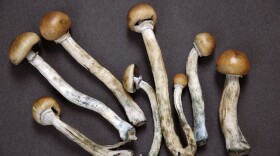Why do we feel pain? Why do we itch? A neurologist who studied at the University of Iowa found the brain neuron group responsible for those sensations in 2020.
L.J. Agostinelli, researches the neurocircuitry of the brain connected to sleep, wakefulness, pain and itch, and has been working on how to reduce pain and itching sensations when they are chronic. She explained on IPR's River to River that while pain, in one setting, can be protective — like letting us know when temperatures are too hot or cold — in other, chronic cases, it can simply be unnecessary.
"That is really what we are trying to prevent," she said. "I don't want to go around eliminating pain and itch from the world because that would create a lot of problems, but long-term, you want to be able to stop these states where pain is just persisting out of control for basically no reason."
The graduate of the UI's Medical Scientist Program has also recently published a brain atlas in the Journal of Neuroscience. A brain atlas is a map of the brain stem — and according to Agostinelli, hers is the most detailed atlas pairing neurochemicals with MRI images to date. Brain atlases help neurologists and doctors compare images of the brain to make diagnoses. Typically, an MRI image is used to do these types of assessments, but the sections of the brain visible in those images had to be discussed in large, sweeping regions and weren't very precise.
"If you want to know more specifically what are the cell groups or what are the brain regions that might be affected by these diseases, there are not very detailed atlases or maps to compare these images to reference to know exactly what are the brain regions that are damaged," Agostinelli explained.
Her new publication seeks to change that, using her detailed chemical brain atlas to correlate to MRI images. To make the atlas, Agostinelli used donated human brains — some with diseases, some without — to scan under a high-resolution MRI.

Once scanned, the brains were sliced into sections and separated. Then, they were stained for neurotransmitters and imaged on glass slides.
The result is a two-sided atlas — the left side with an image of an MRI scan, and the right with a stained image of a human brain.
Still early in her career, Agostinelli isn't sure what her next discovery may be. She's currently completing her residency in neurology at the University of Pennsylvania in Philadelphia.
What she does know — as long as she's learning more about the brain and how it connects, she's content. She says having an open mind is the greatest thing she can do for herself as a scientist.
"For me, I'm most interested in just neuroanatomy in general, which is just what are these brain regions and what do they do and why do they do them. That's been the underlying force for me," she said. "I just want to understand how the brain works."





